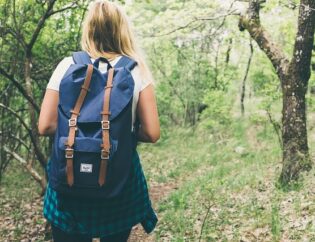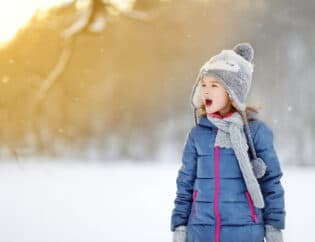
If you’re reading this website, we’re guessing that you’d love to send your kids off to the woods for endless hours of creative and unstructured play. Imagine the sensory and gross motor talents they would come home with! But most of us likely don’t have a “nearby forest” for after school play. As urban and suburban dwellers, the playground has emerged as the place for our kids to get their ya-yas out.
Problem is that kids get bored with the traditional metal and plastic looming structures. And why wouldn’t they? These structures are the product of cautious, risk-minimizing, liability-reducing, fun-killing adults. So what kids end up with are uniform, standardized, boring, fixed plastic and metal offering little room for creativity.
Fortunately, as we continue to learn about the benefits of nature-based play, a new type of playground has moved in. Natural playgrounds are increasingly springing up, bringing in natural materials like trees, dirt and water and more room for imagination.
What is a natural playground?
Natural playgrounds are made of natural elements. As the designers of these play spaces can be pretty imaginative and playful folks, the elements they bring in can range from trees, stumps, logs, boulders, water, plants, sand, ropes, bridges, treehouses.
What does a natural playground look like?
There’s no one size fits all model. But natural elements and earth tones are common to all-natural playgrounds. The earthy color pallet and asymmetrical topography of nature playgrounds might help to aesthetically bridge the gap between the urban and the rural.
If you do a search for natural playgrounds, however, you’ll find that these play spaces run the gamut from hybrid natural/manmade elements with nature-inspired play structures to nature purists who only use natural elements in the spaces. The choice is ultimately one for the particular school, community or family to make.
Here are some examples of natural playgrounds that we like:
What’s the big deal about natural playgrounds?
Natural playgrounds or playspaces present more opportunities for exploration, discovery, learning, and play than traditional playgrounds. Natural playgrounds enable children to move freely and creatively around the environment allowing them to explore, run, jump, climb, crawl, touch, smell, etc, helping connect kids with nature, develop gross motor function, fine motor skills, imagination, and social skills, all at the same time.
Studies show that kids enjoy natural playgrounds more as they encourage more active play and lead to extended playtime compared to traditional playground environments. Research has found that when children go to traditional playgrounds, they can get bored quickly as the structures tend to put limitations on a child’s creativity, challenge and flexibility. Whereas a nature playground may have boulders that can be used in different ways, trees to climb higher each time logs to balance on or run over or use as seating. Nature playgrounds have also been proven to encourage children to consider their safety. In traditional playgrounds, most risks of injuries have been removed.
In addition, there is a growing concern among some experts, lawmakers, and parents regarding the health effects of some of the materials used in traditional playgrounds. In particular, the crumb rubber flooring material made from recycled tires and used in playgrounds across the US can contain heavy metals like lead and manganese, volatile organic compounds like toluene, and polycyclic aromatic hydrocarbons, chemicals that are associated with cancer and other illnesses at certain levels of exposure.
What if I don’t have a nature playground closeby?
Nature play spaces are becoming more popular but, unfortunately, we don't all have one in our neighborhood. The good news is that you can easily, and gradually, bring in elements of nature play to your own backyard or school playground. From building a pond for wildlife, designing a sensory garden, helping your child create a stick fort, or incorporating tree cookies, bringing in natural play elements is a cheap, (usually) easy and super fun family activity.
However, there's no reason why you can't help bring a natural playground to your child's school or community. Often, others just need to learn about the benefits of these play spaces—and see the beauty of them. To help with that effort, we've put together a list of natural playground experts with amazing portfolios and incredible experience. These experts will almost certainly be able to consult with you on your project needs and budget. Be prepared to be impressed— and maybe a little envious! Happy nature play!


















[…] a way to get your kids excited about the great outdoors? Northwest Ohio boasts a growing number of natural playgrounds where children can let their imaginations run wild as they climb, jump, splash and play in the […]
[…] by Nature (a US based website) shares a useful summary on the key elements of natural playgrounds, with examples from across the […]
[…] it – is a full-on rendition of the theme you’ve chosen. We commonly see this with nature-inspired playgrounds. They’ll feature natural-looking equipment with nets, treehouses, timber slats, rock climbs, […]
Comments are closed.